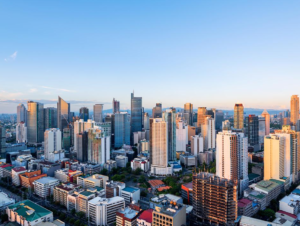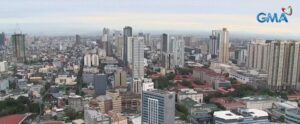Menu
PH Office Space Occupancy Ranks 3rd Highest Globally in H1 – Consultancy Firm

The Philippines has achieved the third-highest office space occupancy rate in the world for the first half of the year, with an average occupancy of 80%. This is largely driven by the growth of the business process outsourcing (BPO) industry, according to real estate consultancy firm PRIME Philippines.
PRIME Philippines Executive Vice President Cholo Florencio stated that the country’s office occupancy rate trails only behind Singapore’s 88% and India’s 85%, and is significantly above the global average of 70%. The United States and Europe posted lower occupancy rates at 62% and 60%, respectively.
Factors Contributing to High Occupancy Rates
Florencio attributed the strong occupancy rates in the Philippines to the BPO sector, which has seen an annual growth rate of 7% to 8%, increased demand from government entities, and a high adoption of flexible working arrangements.
In Metro Manila, the office occupancy rate reached 85%, up slightly from 84% in the previous year.
“I think we will be able to sustain our momentum in terms of adding a bit of occupancy levels. The challenge really is when more buildings will be left by the online gaming companies,” Florencio noted during a briefing in Makati City.
Impact of POGO Ban on Office Space Demand
The office space market is facing challenges due to the declining presence of Philippine Offshore Gaming Operators (POGOs). President Ferdinand “Bongbong” Marcos Jr. announced a ban on POGOs in his third State of the Nation Address (SONA) in July, directing the Philippine Amusement and Gaming Corp. (PAGCOR) to cease all operations by the end of the year. A cost-benefit analysis by the Department of Finance (DOF) indicated that the POGO industry resulted in a net economic cost of PHP 99.52 billion as of 2021.
Florencio acknowledged the decline in office space takeup by POGOs since the COVID-19 pandemic, with vacancies expected to rise following the government’s ban. “There has been a very sharp decline ever since the pandemic. It’s unfortunate, of course, because we’ve heard a lot of negative stories about criminality and scams that have really affected the POGOs here,” he said.
Strategies for Sustaining Office Occupancy Rates
To counter the anticipated decline in demand due to the POGO exit, Florencio suggested that developers should enhance their offerings to attract new tenants. This could include adding more amenities and benefits to make office spaces more appealing.
Despite these challenges, Florencio remains optimistic about sustaining the country’s office occupancy rates. He pointed out that the BPO sector continues to be a major economic driver and that government agencies have been increasingly occupying office spaces, especially as many of their headquarters undergo rehabilitation.
“There is also a consistent demand for co-working spaces, which are technically part of the office sector. Demand can translate into co-working facilities, so it’s not just the traditional office space you’re seeing right now,” he added.
#Top Tags COVID Covid-19 Technology Finance Investing Sustainability Economy

Subscribe to Our Newsletter and get a free pdf:



















Comments are closed for this article!